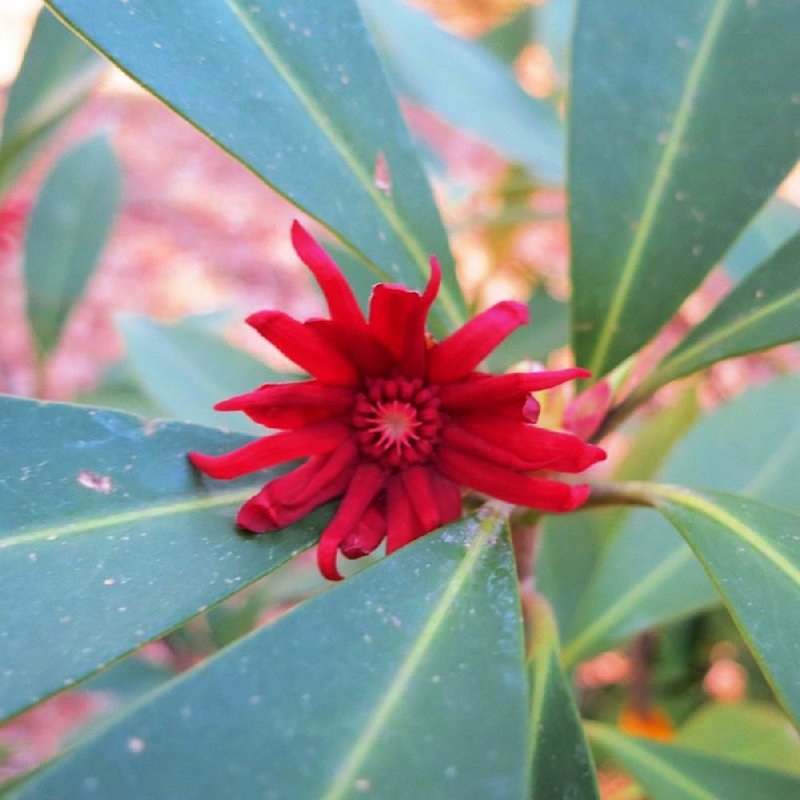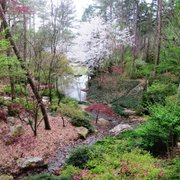Shade is a very good thing in an Arkansas summer, and a lovely garden in the cool shade is a particular pleasure when temperatures soar.
But summer is not the only season when shade shines. A garden in the shade can be a thing of beauty all year.
There are plenty of plants that enjoy a shady spot, so having something in bloom in every season is easily achieved. Avoid plants that don’t do well without full sun - fruits, vegetables and grass - and you’re off to a good start.
If you wish to create a beautiful garden in a shaded spot, you must first determine how dense the shade is. Any area that receives less than six hours of sunlight each day is considered shady, but the time of day it receives sunlight determines what plants will grow and bloom best.
It is more challenging to grow plants under large-leafed evergreen trees such as magnolias, which let in hardly any light, than it is under pines, which tend to admit dappled sunlight throughout the day.
Some standard suggestions work for sunny or shady spots:
First, having a plan in mind will help organize the space and let you get the most out of your garden. For instance, a backbone of evergreens serves as a backdrop to flowering perennials, annuals and deciduous plants.
Next, make sure to give the plants the room they need to grow and expand. Plant too closely and pretty soon you have a jungle on your hands, and the plants won’t reach their full potential. Open spaces in a woodland garden are inviting, so make your beds large enough to allow for expansion and growth.
SHRUBS
Evergreen shrubs grown mainly for their foliage in the shade include hollies, boxwood, aucuba and cleyera. There are also cephalotaxus in the southern two-thirds of the state and taxus in the northern third, both commonly called yews.
Gardeners in the southern half of the state can also grow sweet box, podocarpus and pittosporum. Other blooming evergreens include Illicium or Florida anise with white, red or pink flowers, camellias, azaleas and rhododendrons. There are also winter daphne, mahonia, pieris, gardenia, loropetalum and leucothoe from which to choose.
Some will bloom in deep shade, but most need some sunlight to bloom - either morning sun or filtered sun. Most won’t do well in full sun with the exception of loropetalum, which actually blooms best with full sun but does a pretty good job in shade.
Deciduous shrubs lose their leaves in the fall, but many have attributes that make growing them worthwhile anyway. Shade-loving hydrangeas, deciduous azaleas, clethra, itea, Carolina allspice, kerria and lilacs bloom well in filtered sun. Clethra, Carolina allspice and kerria are fairly drought tolerant, but the rest like regular water.
SUN-SHY PERENNIALS
Perennials add to the shade garden’s palette.
Make sure when adding plants that you consider the seasons. Starting in late winter, you have hellebores or Lenten roses. These perennials have evergreen foliage and give you gorgeous blooms from December through May depending on the variety-and they are poisonous, so deer leave them alone.
Other early bloomers include bleeding heart ( dicentra), foxglove, toad lily (Tricyrtis), turtle head (Chelone) and Japanese anemones. Native wildflowers such as bloodroot, trilliums, crested irises, woodland phlox, wild violets, woodland poppies and lady slipper orchids add seasonal color and are tough performers in the right location.
Some of the early spring bloomers are classified as spring ephemerals, here today and gone from sight tomorrow. Mark where you have them planted so you don’t damage them when digging and planting other plants in later seasons.
Perennials grown primarily for foliage include a huge host of ferns, hostas and heucheras, with plenty of color options as well as maximum size. Tiarellas or foam flower and Asarum gingers are also great shade perennials, along with Solomon’s seal, which comes in green or variegated, and thanks to recent hybridization is also available in dwarf options as well.
Elephant ears are available in numerous sizes and colors too, and some are winter hardy, while others probably would be best lifted and stored for the winter to ensure their survival.
SHADY-SPACE ANNUALS
Common impatiens reign supreme as shady annuals, but there are now more options within impatiens, including New Guinea hybrids to trailing impatiens, fusion impatiens and miniatures. Some need a bit of light to bloom well, but common impatiens will bloom well in light to deep shade, provided they get some water. They are not drought-tolerant plants.
Wax leaf begonias will grow in sun or shade, while Dragonwing begonias do best in light shade.
Caladiums come in a range of colors and really brighten a shady spot, thriving in all types of shade.
Alternanthera, iresine and coleus are grown for their colorful foliage. Some will also do well in sun or shade.
Other shade-loving annuals with masses of flowers include torenia, browallia with light blue to purple flowers and plectranthus “Mona Lavender.”
GROUND COVERS
You really can’t have a great lawn in shade, but ground covers can take the place of grass and require much less maintenance.
Mondo grass and liriope look like grass, while ajuga, pachysandra, mazus, ardesia, asarum, lysimachia and sedums provide different textures and, occasionally, blooms. Moss is an excellent ground cover for shade and takes care of itself.
When gardening in the shade, you need to be careful of damaging tree roots when planting. Don’t bring in loads of soil to build beds that can smother the roots and kill trees.
Cluster plants together and mulch between the various plantings to ensure ample oxygen and water make it to your tree roots. Mulch is an excellent way to moderate soil moisture and temperature and keep weeds at bay. Weeds are not as much of an issue in a shade garden as they are in the sun, but some weeding will still be required.
SECOND CHANCES
When a plant dies, you don’t have to replant with the exact same thing. Determine when your garden needs some extra color and choose a plant that will bloom at that time.
The lists of plants suggested here are merely a starting point. New plants or new varieties of familiar plants appear every year. The nice thing about gardening is there is always something new to try. The challenge can be finding a place to plant it. Visit local nurseries and see what is out there.
Catalogs are a good place to get additional suggestions.They make inexpensive textbooks and provide a lot of information about maximum size, plant needs and bloom times.
Finally, make sure you can maintain what you plant. Many gardens suffered in the past two summers without ample water. Don’t plant if you don’t plan to water. Even the most drought-tolerant plants need water to get established.
HomeStyle, Pages 35 on 04/20/2013

